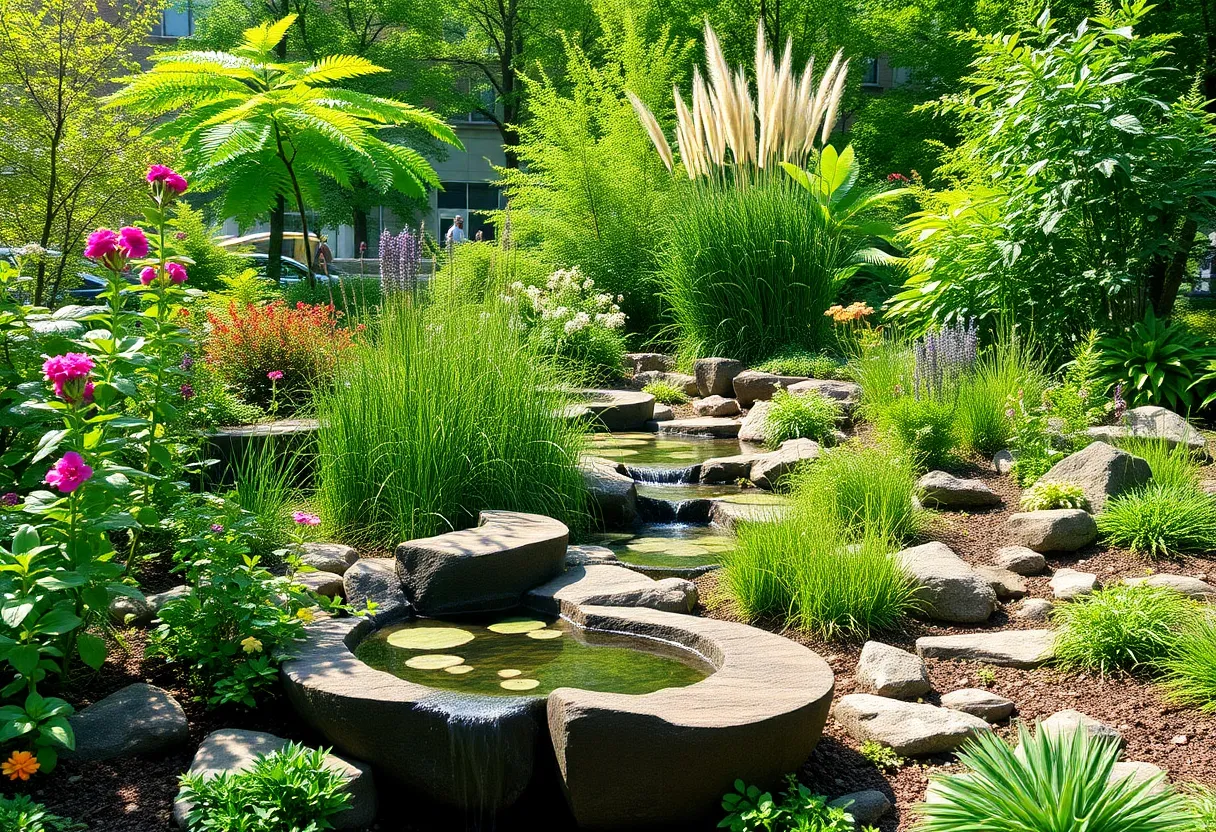7 Steps to Designing an Eco-Friendly Garden in New York City
Establishing an eco-friendly garden in New York City requires strategic planning and informed choices. Such gardens serve as vital green spaces within urban environments, fostering biodiversity, conserving resources, and enhancing the quality of city life. By adhering to these seven fundamental steps, you can develop a garden that is both sustainable and resilient, tailored to NYC’s unique climatic conditions and urban constraints.
1. Assess Your Space and Define Precise Objectives
The foundation of an effective eco-friendly garden lies in a comprehensive space assessment. Determine the exact dimensions, sunlight exposure, wind patterns, and existing conditions of your site—whether rooftop, balcony, backyard, or communal lot. Clear objectives should be established—such as prioritizing native flora, supporting pollinators, creating a habitat for local wildlife, or producing edible crops. Precisely defined goals streamline the design process, guiding plant selection and structural elements to meet ecological, aesthetic, and practical needs.
2. Select Native and Drought-Resistant Vegetation
Native plants are inherently adapted to NYC’s climate and soil conditions, requiring less water, fertilizers, and maintenance. Examples include New York aster, beach plum, and eastern purple coneflower. Incorporating drought-tolerant species enhances water conservation efforts—crucial amid urban water resource challenges. Native flora supports local fauna, including insects, birds, and pollinators, thus promoting ecological balance and resilience. Avoid non-native ornamental species that may require excessive watering or chemical inputs, which undermine sustainability.
3. Integrate Advanced Water Management Techniques
Sustainable water use is critical in urban settings. Rainwater harvesting via rain barrels captures stormwater runoff, reducing reliance on municipal water supplies and mitigating backyard flooding. Use permeable surfaces—such as gravel, permeable pavers, or engineered soil—to facilitate water infiltration, prevent runoff, and replenish groundwater. Implementing green infrastructure aligns with the ‘sponge city’ concept, maximizing stormwater absorption and purification qualities within your garden design. Efficient water management directly supports plant health while minimizing environmental impact.
4. Incorporate Recycled and Environmentally Friendly Materials
Utilizing recycled materials significantly lessens your garden’s carbon footprint. Construct raised beds from reclaimed wood, repurpose discarded furniture into planters, and select pavers made from recycled concrete or rubber. These choices reduce waste disposal and often add aesthetic value. When designing pathways or borders, favor sustainable materials that ensure durability while promoting eco-consciousness. Thoughtful material selection reinforces a commitment to environmental stewardship and livability.
5. Design to Support Local Wildlife and Pollinators
Enhancing your garden’s biodiversity involves creating habitat features that attract and sustain native wildlife. Plant a variety of native flowering plants to supply nectar and pollen during critical pollination periods. Incorporate architectural features such as nesting boxes for birds, insect hotels, and shallow birdbaths to provide shelter and water. Ensure that the garden offers continuous bloom cycles and shelter options, making it an oasis for butterflies, bees, birds, and beneficial insects—vital for maintaining ecological equilibrium within urban landscapes.
6. Employ Organic Gardening Principles
Adopt organic techniques to maintain soil vitality and reduce chemical dependency. Use composting systems to recycle organic waste into nutrient-rich amendments. Apply organic mulches to retain moisture, suppress weeds, and improve soil structure. Practice crop rotation and companion planting to naturally deter pests and promote healthy growth, thereby minimizing the need for chemical interventions. Emphasizing soil health ensures robust plant development and supports a balanced urban ecosystem.
7. Foster Community Engagement and Knowledge Sharing
Active participation in community gardening initiatives cultivates knowledge exchange and collective efforts toward sustainability. Join local gardening groups, participate in workshops, and volunteer for communal projects. These engagements foster shared resources, community resilience, and environmental awareness. Community gardens serve as exemplars of sustainable urban development, where collective stewardship consolidates ecological and social benefits. Engagement also elevates awareness of sustainable practices and encourages replication across neighborhoods.
Conclusion
Developing an eco-friendly garden in New York City involves a holistic approach that combines strategic planning, thoughtful plant selection, sustainable resource management, and community involvement. By implementing these seven steps, you contribute to urban environmental health, support biodiversity, and create a space that offers long-term ecological and aesthetic benefits. Embracing sustainable practices transforms small city plots into vibrant, resilient ecosystems—adding beauty, value, and environmental integrity to the urban fabric.
Author: STAFF HERE NEW YORK WRITER
The NEW YORK STAFF WRITER represents the experienced team at HERENewYork.com, your go-to source for actionable local news and information in New York, the five boroughs, and beyond. Specializing in "news you can use," we cover essential topics like product reviews for personal and business needs, local business directories, politics, real estate trends, neighborhood insights, and state news affecting the area—with deep expertise drawn from years of dedicated reporting and strong community input, including local press releases and business updates. We deliver top reporting on high-value events such as New York Fashion Week, Macy's Thanksgiving Day Parade, and Tribeca Film Festival. Our coverage extends to key organizations like the Greater New York Chamber of Commerce and United Way of New York, plus leading businesses in finance and media that power the local economy such as JPMorgan Chase, Goldman Sachs, and Bloomberg. As part of the broader HERE network, including HEREBuffalo.com, we provide comprehensive, credible insights into New York's dynamic landscape.





